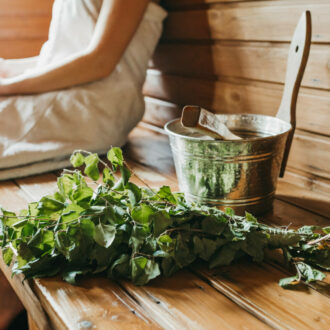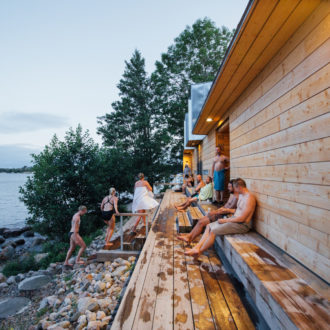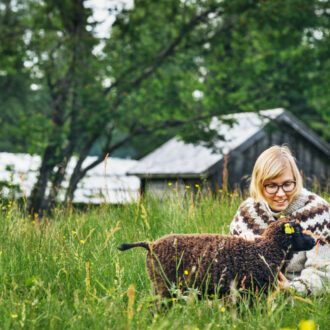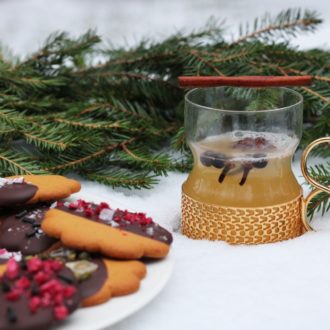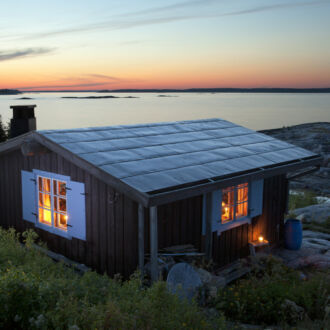“This is the healing hand of the forest,” says traditional sauna healer Laura Foon, gesturing to a lush bouquet made from small, soft branches of a maple tree.
“Maple is the protector of the sauna,” she says. “It’s cleansing and it helps energise and then relax the body during treatments.” Foon is the chairperson of the Association of Traditional Sauna Healers, which she cofounded in 2020. It’s a Finnish collective devoted to immaterial sauna culture, traditional sauna healing and sauna rituals.
According to Foon, maple also moves the air in the sauna and helps circulate the löyly – the steam that rises when water is ladled onto the hot stones on top of the sauna stove.
Mind, body and soul
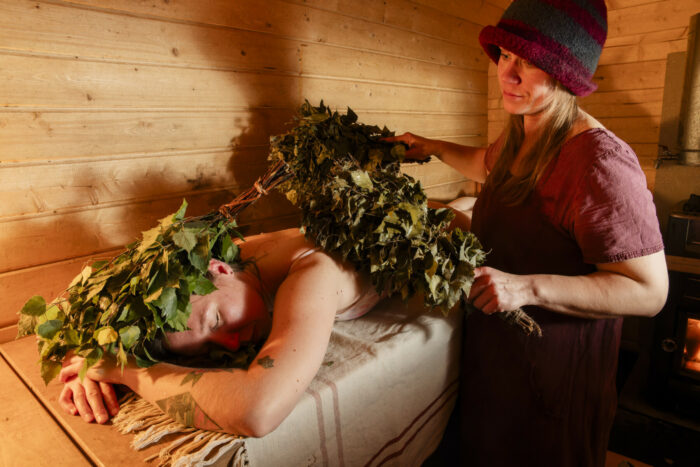
With a tree-branch whisk, a sauna healer taps and pats a client’s skin gently and traces circles in the air above them.Photo: Sipoonjoki Heritage Sauna
Löyly is, of course, the key to the sauna, that quintessential Finnish steam bath and source of wellbeing. The history of the Finnish sauna dates back 10,000 years according to some estimates, and “sauna culture in Finland” is inscribed in Unesco’s list of Intangible Cultural Heritage. A healthy steam is part of everyday life for mind, body and soul in Finland, where there are more than three million saunas for a population of 5.6 million.
Foon is one of the founders of Sipoonjoki Heritage Sauna, located in the countryside about 35 kilometres (20 miles) northeast of Helsinki. In treatments there, she and her colleagues include folklore traditions such as sauna spells. A sauna session can last from 20 to 90 minutes.
Comfort steam
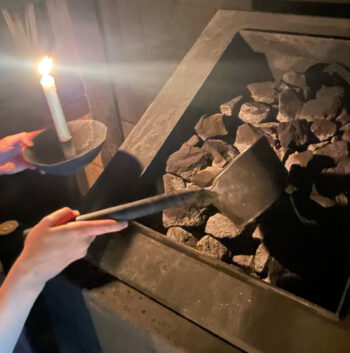
Tipping water from a ladle onto hot stones creates löyly, sauna steam.Photo: Katja Pantzar
As a client lies on their stomach or back in a comfortable position on the sauna bench, a sauna healer taps and pats their skin gently, from head to toe, with a whisk made from small tree branches. The whisk is also used to trace circles in the air above them.
A sauna healer may invoke a spell by reciting or singing it, such as a meditation on healing löyly or a call to Mielikki, the Finnish goddess of the forest and the hunt. Members of the Association of Traditional Sauna Healers have sung sauna spells and offered sauna treatments several times at the annual Kaustinen Folk Music Festival, held in a town about 450 kilometres (280 miles) north of Helsinki.
The most commonly used tree for making whisks is birch, which Foon calls “the mother of all Finnish trees,” but she says that any plant or tree that is not poisonous is suitable for sauna use.
Multidimensional benefits
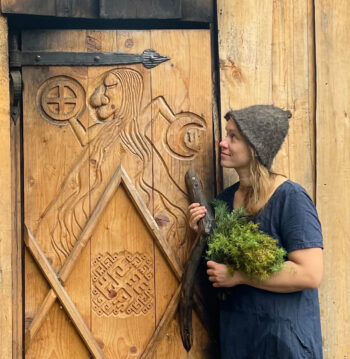
Sauna healers use whisks made from the branches and leaves of various trees.Photo: Katja Pantzar
Each tree has specific symbolism and assets rooted in Finnish folk tradition and in knowledge passed down through generations of sauna healers.
“My favourite trees include pine, spruce and juniper, which is a strong healer, as it’s antiseptic and good for the lungs and breathing,” says Foon, “and birch for healing and bathing, as it’s a natural soap and makes everything flow.”
The sauna’s purposes and benefits are multidimensional – physical, psychological, social and spiritual. The application of folklore tradition to modern times includes seasonal wisdom such as using specific trees at certain times of year.
Sweat your worries away
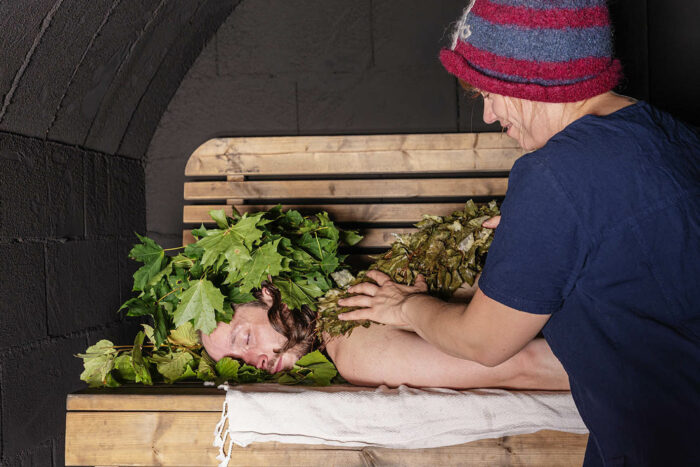
“Traditional sauna treatments and folklore wisdom have stood the test of time,” says sauna healer Laura Foon.Photo: Sipoonjoki Heritage Sauna
As for the reason behind the growing interest in traditional sauna heritage, Foon says, “The past couple of generations in Finland have denied their roots. But technology has neither brought us happiness nor belonging, while traditional sauna treatments and folklore wisdom have stood the test of time and contribute to a feeling of joy and communal belonging.”
She continues, “When you remove your clothing in the sauna, you remove all your burdens and sweat away pain, stress and worries. Sauna is a sanctuary for caring and sharing that begins in the forest.”
Five trees used in sauna whisks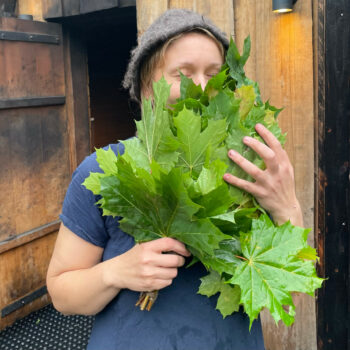 Photo: Katja Pantzar Sauna whisks have two names in Finnish, depending on the local dialect. In general, they are called vihta in the west and vasta in the east. You make one by gathering together thin branches cut from a tree, whittling them away at the base and binding them together with twine or a thin sliver of a branch, into a bunch resembling a bouquet. Whisks are often soaked in water to soften them up before use. Birch: The Finnish national tree is good for the skin, and its scent brings aromatherapeutic benefits to the sauna. It is naturally cleansing and believed to have healing, feminine power. Pine: A good tree for mental balance, it calms the mind and is soft. Pine helps reduce inflammation, is a natural antiseptic and can help to reduce stress and insomnia. Spruce: Spruce needles are antioxidant and antiseptic, and help relieve pain and inflammation by helping increase circulation. Often used for respiratory problems, stomach problems, rheumatism and muscle pains, spruce resin activates in the heat of the sauna. Juniper: Juniper is antiseptic and a strong healer, used for the respiratory system, digestion problems, heartburn and bloating. Alder: Good for sensitive skin, as it has a mild scent. Help muscles relax, too. |
By Katja Pantzar, October 2024

